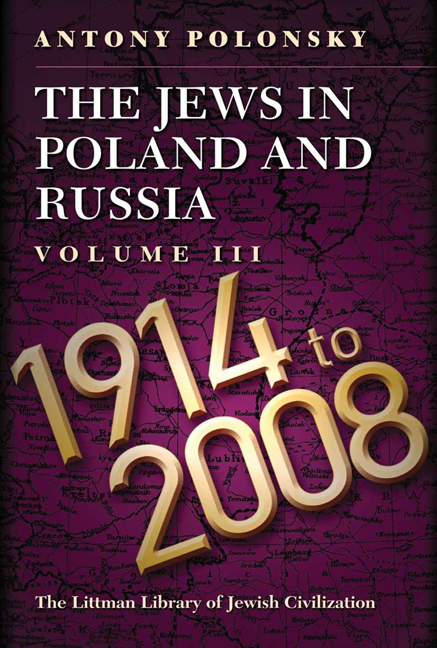Book contents
- Frontmatter
- Dedication
- Acknowledgements
- Contents
- List of Maps
- List of Tables
- Note on Transliteration
- Note on Place Names
- Maps
- General Introduction
- PART I FROM THE FIRST WORLD WAR TO THE SECOND
- PART II WAR AND GENOCIDE, 1939–1944
- PART III FROM THE END OF THE SECOND WORLD WAR TO THE COLLAPSE OF THE COMMUNIST SYSTEM
- EPILOGUE JEWS IN EASTERN EUROPE AND RUSSIA SINCE THE END OF COMMUNISM
- Conclusion
- Glossary
- Bibliography
- Index
11 - The Mass Murder of the Jews, 1941–1944
- Frontmatter
- Dedication
- Acknowledgements
- Contents
- List of Maps
- List of Tables
- Note on Transliteration
- Note on Place Names
- Maps
- General Introduction
- PART I FROM THE FIRST WORLD WAR TO THE SECOND
- PART II WAR AND GENOCIDE, 1939–1944
- PART III FROM THE END OF THE SECOND WORLD WAR TO THE COLLAPSE OF THE COMMUNIST SYSTEM
- EPILOGUE JEWS IN EASTERN EUROPE AND RUSSIA SINCE THE END OF COMMUNISM
- Conclusion
- Glossary
- Bibliography
- Index
Summary
… anyone who has once looked into the face of a Red Commissar knows what Bolsheviks are … It would be insulting animals if you described these mostly Jewish features as animal-like.
‘Information for the Troops’ provided by the German Army High Command, June 1941The Polish people and the Government of the Republic of Poland were in - capable of deflecting the Nazi steam-roller from its anti-Jewish course. But the question is permissible whether the attitude of the Polish people befitted the enormity of the calamities that befell the country's citizens. Was it inevitable that the Jews, looking their last on this world as they rode in the death trains speeding from different parts of the country to Treblinka or other places of slaughter, should have seen indifference or even joy on the faces of their neighbours? In the summer of 1942, when carts packed with captive Jewish men, women and children moved through the streets of the capital, did there really need to be laughter from the wild mobs resounding from the other side of the ghetto walls, did there really have to prevail such blank indifference in the face of the greatest tragedy of all time?
EMANUEL RINGELBLUM, Polish–Jewish Relations during the Second World War, 1944IT WAS THE INVASION of the Soviet Union on Sunday 22 June 1941 by German forces, supported by troops from Finland, Hungary, Italy, Romania, and Slovakia, that made genocide possible. The conflict that followed was seen by the Nazis as an ideological crusade and a war of extermination (Vernichtungskrieg). Hitler and his circle saw the war as the opportunity to carry out an even more radical ethnic reshaping of the areas east of Germany than that attempted in the Polish areas directly incorporated into the Third Reich. General Plan Ost, formulated early in 1941, envisaged massive German settlement in the areas they hoped to conquer, which would be made possible by the expulsion or starvation of ‘thirty-one million Slavs’ and, presumably, by the elimination of most of the local Jews.
- Type
- Chapter
- Information
- The Jews in Poland and RussiaVolume III: 1914 to 2008, pp. 413 - 475Publisher: Liverpool University PressPrint publication year: 2012

